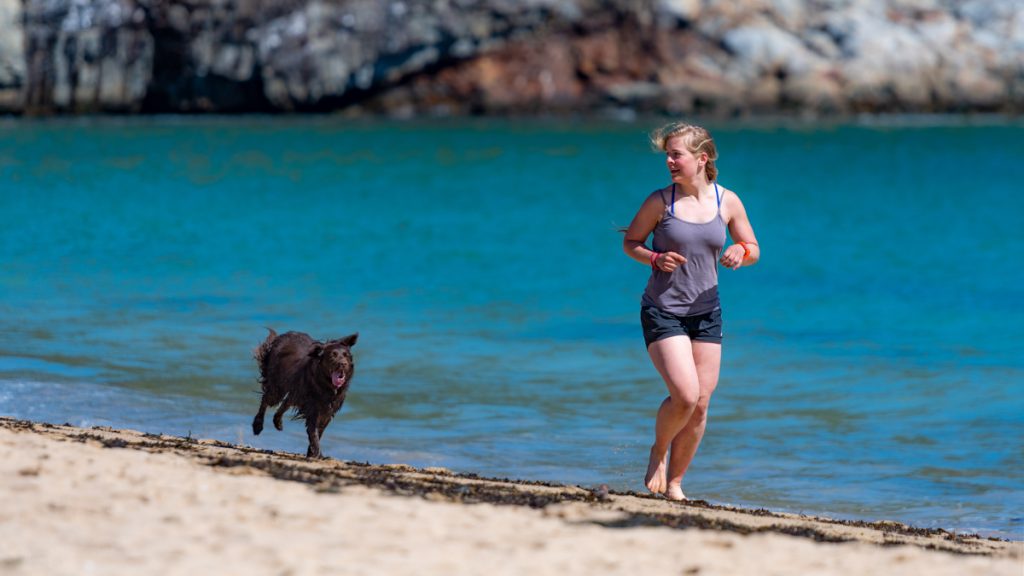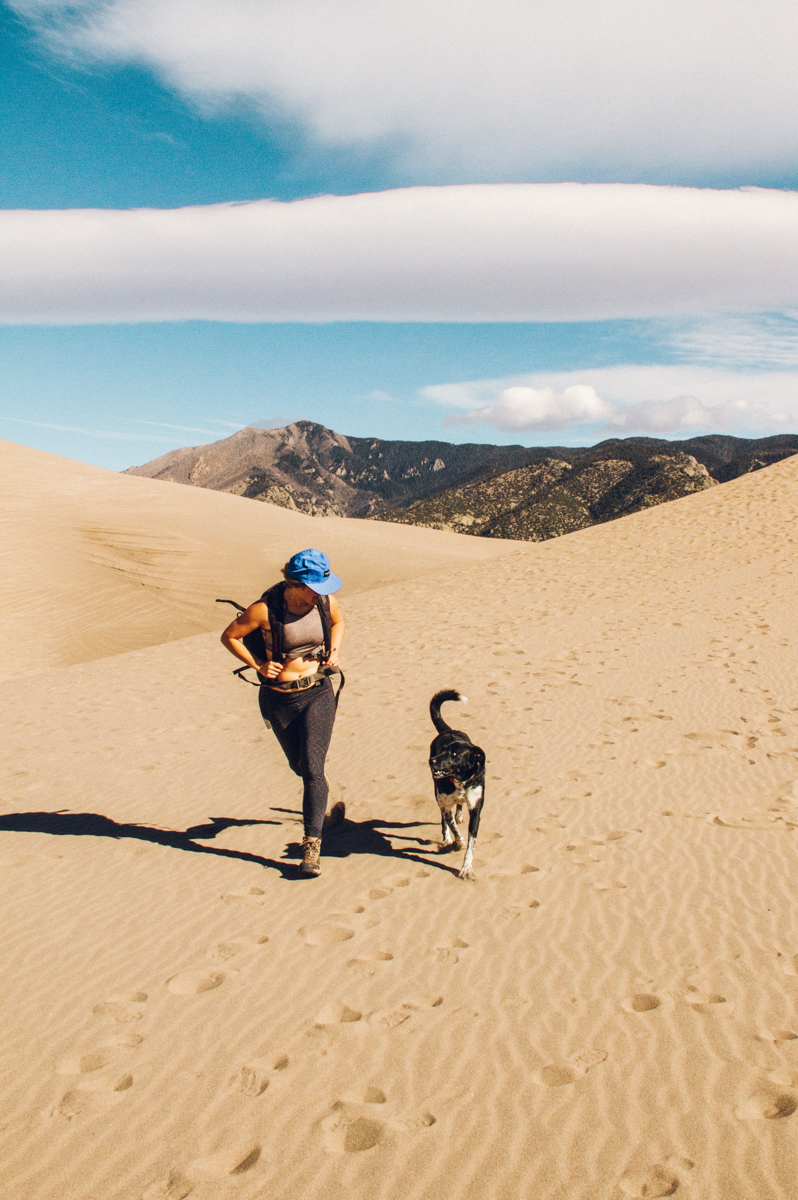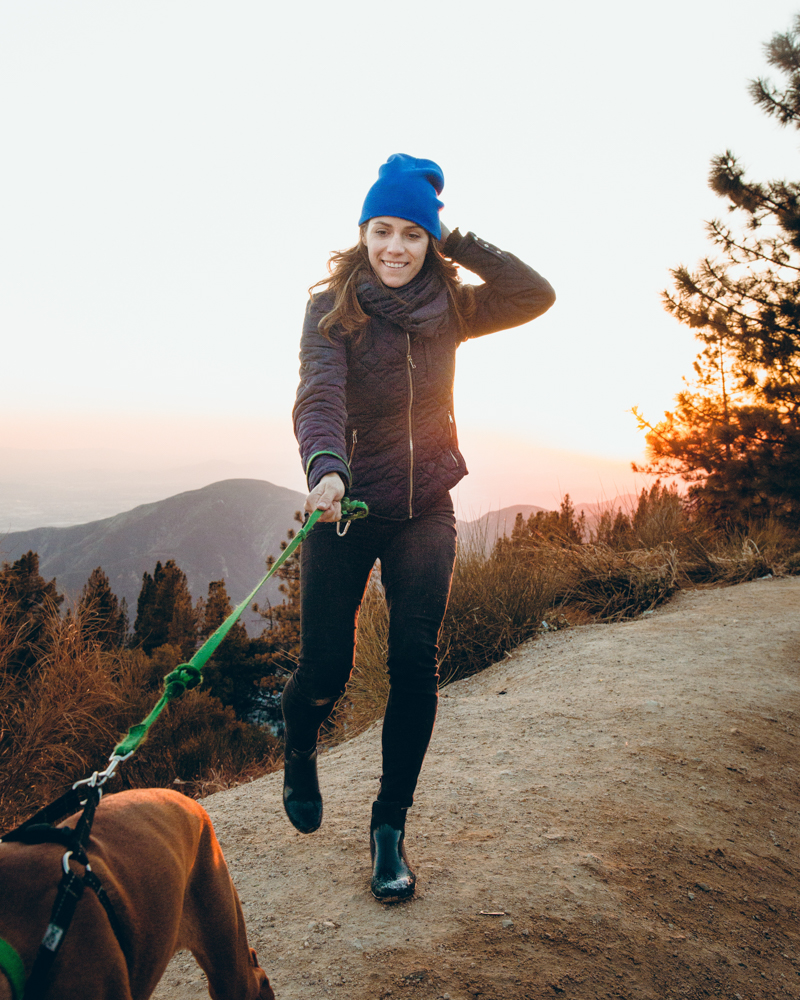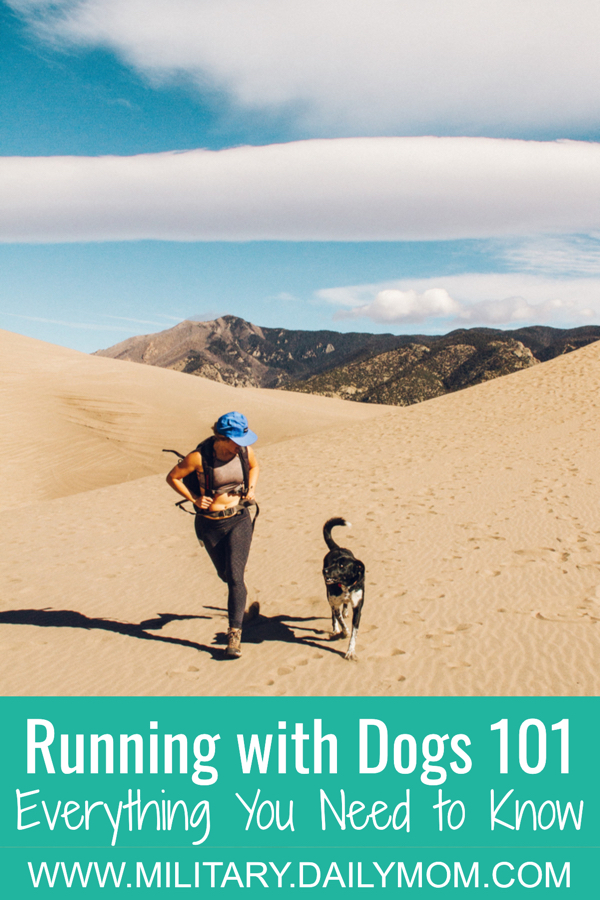When you’re looking for motivation to get out there and log some miles, nothing beats heading out the door with your best 4-legged friend. Doggo needs the exercise anyway, why not make it a twofer and get the most bang for your buck? But before you decide to go running with dogs, be sure to keep a few important details in mind so you and your pup stay safe and healthy on the roads and trails.
Dogs 101

Some dogs are more suited for running than others. Dogs that fit in the “sporting” category—sight hounds, scent hounds, pointers, and retrievers are all great options. Leaner dogs are best for long-distance runners, while heavier dogs might only be good for a few miles. And just because your pup is short doesn’t mean he’s off the list. Some terriers have the energy for days and can keep up for miles upon miles and then still want to go out for more! Dogs that have “smooshed noses” such as bulldogs, pugs, and similar breeds have a lot of breathing issues and are not generally suited for running.
It’s best to consult your vet and know your dog’s athletic abilities. And if you’re looking to adopt a new pup, do your research to find a breed that is built for endurance! Did you know that while greyhounds are known for racing, they don’t really like steady running? When running with dogs, dog breed really can make a difference.
Running With Dogs: How to Get Started
Once you’ve found a pup to run with, or once you’ve decided to add your pooch to your regular running routine, it’s good to know some basic rules for getting started. Most importantly, if pup is still a puppy, wait. Most veterinarians prefer dogs to be almost two years old before you start logging daily miles. This gives their bones a chance to reach full growth and avoid any damage down the line. This doesn’t include letting puppy romp around the yard; we’re talking about continuous jogging or running miles.
Related: How To Start Running
Once you know that Fido is ready to run, remember that he’s a newbie, just like you are or once were. He needs to start slowly, with maybe a half-mile or mile for the first few outings. Dogs may seem full of boundless energy, but they aren’t physically ready to up and run 10 miles the first time out the door with you. It will also be a steep learning curve as you begin running together because your sweet pup will likely want to stop and sniff or potty at rather unexpected times. This leads to a lot of leash jerking, which is frustrating for both of you! Be patient.
If you’ve spent time working with your pup on leash-walking skills, transitioning to running will definitely be much easier. Knowing commands like “heel,” “off,” or “come” will help your pup know to better stay by your side. Try teaching pup to stay on one side of you, such as always on your left side. This will alleviate constantly tripping over your pooch, which can be both annoying and potentially dangerous!
Trouble-Shooting

Since dogs can’t tell us what’s wrong, runners need to pay attention to physical cues from their pups to gauge whether your pup is okay or not. If your dog is keeping up with your or pulling ahead of you, he’s probably still full of energy. But if your dog is lagging behind and you are slowing down to try to let him catch up, or–worse–dragging him along by pulling the leash, he’s trying to tell you he’s out of gas.
Do not force your dog to keep going at that point. It’s best to stop and walk. You can always get back out after dropping him at home. (Yes, frustrating, but remember, this is supposed to be fun for both of you!) Also, since dogs don’t sweat like humans do, they can overheat much more quickly. Pay attention to warning signs like excessive panting to avoid much more devastating issues.
If the temps are climbing, do a realistic check of whether or not your dog can hang. Some dogs tolerate exercise in the heat more than others, but all dogs have an extra layer of warmth that we don’t have, and you don’t want to risk hurting them.
Related: Outfitted–A Running Gear Guide
Other things you can do to avoid problems include bringing water for your pup, even on short runs, when it’s hot and when it’s comfortable. Be aware of pavement temperatures. Remember that their pads are sensitive to heat and can burn and blister if forced to walk or run on burning summer roads.
On the flip-side, in the winter beware of salted roads as some de-icing chemicals are harmful to paws or can be poisonous if they lick their paws post-run. If your dog is lean or sensitive to cold, a dog coat can help both of you stay active through cold winters. Be sure it doesn’t have any sharp pokey areas that would rub or irritate as he runs.
Get the Gear

While running is one of the easiest sports to pick up for both humans and dogs in terms of equipment, there are still a few things that can help make your outings easier or hassle-free. Most important is a good leash. While most everyone opposes retractable leashes in general, a bungee-style leash can sometimes help buffer some of the pulling and jerking that dogs do as they run.
Some dogs run better with a harness instead of a collared leash as it minimizes pulling or at least minimizes the strain on the neck while they’re trying to drag you down the road. Some runners prefer a hands-free leash system that you wear as a belt, allowing your arms to swing freely as you run. If you’re just starting out with Fido, or if Fido is a 200-pound puller, this might be an option for later on when he’s better trained!
A portable water bottle or bowl is always a great accessory for when your pup needs a quick break. We get thirsty; your dog does, too! Some dogs benefit from wearing dog booties to protect paws from all sorts of things ranging from hot pavement and icy weather to sharp objects that might cut or pierce on trails or even debris-strewn roads. And of course, though not “gear” specifically, proper training is always great for any run, but especially for those wanting to run off-leash with pup on dog-friendly trails.
Running With Dogs: It’s Doggone Good!

It’s really not as complicated as it all seems, and running with your dog offers so many benefits! The plus sides for you include better health, lower stress, and more time in your day because you got yourself and your pup a workout in one outing! And your pup will see great benefits, too! Health and fitness aren’t just for us humans–dogs need exercise to stay healthy and in good shape so they can keep licking your nose for years to come. It quells anxiety in nervous dogs. Most vets will recommend daily, vigorous exercise for anxious dogs before they look into any other remedies. And for those super-active dogs, a good long run will help mellow them out so they spend more time resting and less time chewing on your new running shoes!
WANT TO READ MORE?
Here’s what you need to know about Surviving Summer Running

CONNECT WITH DAILY MOM
💖 NEWSLETTER: DAILY READS IN YOUR INBOX 💖
Sign up to receive our picks for the best things to do, see and buy so you can relax and focus on more important tasks! Let us help you be the best version of yourself you can be!
BE SOCIAL WITH US
📌 LOVE IT? PIN IT!📌
Photo Credits: Unsplash








































